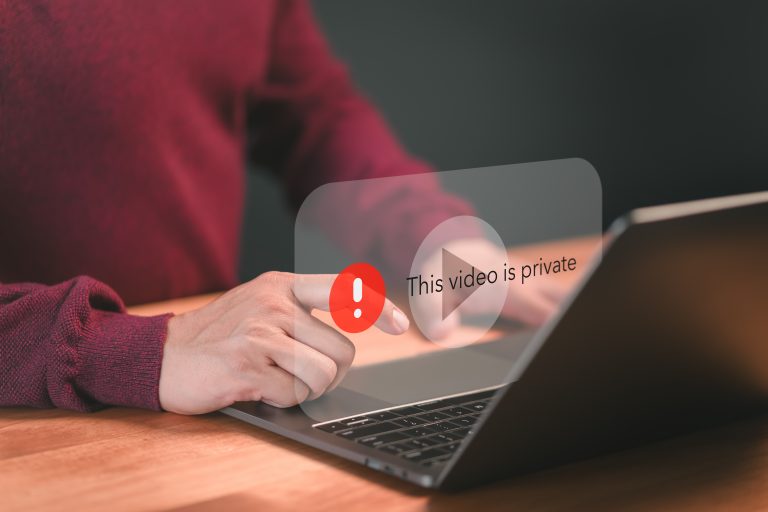Navigating Privacy Settings on Social Media Platforms
December 12, 2023Social media has become a ubiquitous aspect of daily life, making the management of privacy settings increasingly vital. This article…

The web has completely changed the way in which most of us access information including details about the people in our lives. Conducting quick online search results might help us locate former high school classmates, learn more about the particular person we’re planning a first date with or make sure that there aren’t any sex offenders living in your neighborhood.
In recent times, data aggregation websites have proliferated, allowing users to quickly enter the personal information of millions of friends, acquaintances, and strangers.
But as convenient as this deep well of information could be, it could additionally feel disconcerting to know that the details of our own private lives can be found online for virtually anybody to discover.
Luckily, these people search websites are required to allow people to opt-out of having their info saved as convenient reports in their databases; however, they do require you to do a little bit of legwork to remove yourself from their systems.
Beneath, we’ll walk you thru the process of the CheckPeople opt-out, one of the dozens of players within the crowded personal data marketplace.
Fast Facts For CheckPeople Opt-Out
For more than twenty years, Palo Alto, California-based CheckPeople was founded to offer customers an option for conducting complete background searches using an individual’s first and last name.
The site employs a proprietary algorithm to scrape information from a wide range of online sources, including public records data, databases, social media profiles, and other websites. The service then compiles all the info right into a single convenient report for members to access.
To start a search, CheckPeople customers can simply enter an individual’s first and last name, though providing other identifying details like the town and state in which they stay can improve the chance of returning a correct result (especially in the case of a relatively common identity).
Customers also can conduct a reverse telephone number search to find out who owns the number, which may be useful when you’re getting repeated spam or harassing calls from a specific number. In addition to uncovering their id, you may also access extra details about the caller.
To compile its reports, CheckPeople draws on publicly accessible info sources, including criminal records information; civil information like child custody, personal injury, or different non-criminal court cases; bankruptcy filings and liens; lawsuits in which the individual has been a plaintiff or a defendant; arrest reports and traffic reports; and sex offender status.
When customers search for an individual, the report returned by CheckPeople contains details such as the person’s full name as well as any aliases; present and prior addresses; contact info; names of family members and cohabitants; criminal records historical past; traffic records; online dating accounts and social media accounts; divorce records and sex offender status. Members can enter unlimited searches and reports to do a background check.
While it’s legal to use websites like CheckPeople to search for more about people for purposes of mere curiosity, it’s illegal to use this info in ways that violate the Fair Credit and Reporting Act (FCRA), similar to employment decisions, tenant screening or determining credit or insurance eligibility.
Info obtained via CheckPeople should also not be used for stalking, harassment, identity theft, or other blatantly illegal actions.
What if you wish to do a CheckPeople opt-out and don’t have your info available? The website recognizes that some individuals need their privacy maintained, so it has developed a process that allows you to complete a CheckPeople.com opt-out.
It doesn’t take a long time to do the opt-out page so please just give it a shot.
In case you have a common name that returns too many results, search once more and this time provides your state, and even your city if you must narrow the results down further.
NOTE: Many individuals have multiple public records on this website. You’ll need to repeat all steps for every record you find.
NOTE: In case you don’t get a right away confirmation link in your e-mail, check your junk/spam folder.
NOTE: Allow as long as 30 days for CheckPeople to finish with your removal process and if your info stays on the site after 30 days, contact the CheckPeople customer service representative for help. You may call them at 800-267-2122 or e-mail them at [email protected] for help on how to submit a request on the website.
Do you still have questions about opting out of CheckPeople? These FAQs might assist you in better understanding the process.
You don’t need to subscribe to the site to remove from CheckPeople sensitive information about yourself.
CheckPeople claims to save your opt-out notification. There isn’t a reason to doubt this. However, it doesn’t hurt to double-check from time to time to be sure you don’t appear in searches. If nothing else, this gives you the safety that you no longer appear in search results.
Online reviews about CheckPeople differ widely. Some customers say that the site has protected them from falling for online daters who already had spouses.
Others use the site for criminal background checks on coworkers or different acquaintances and feel safer doing so.
Other customers say that the reports are outdated and don’t provide the very best info on people. Some reviewers claim the site usually shows incorrect telephone numbers.
Moreover, many individuals feel uncomfortable having their personal details out there to anybody who needs them.
User feedback on that is conflicted. CheckPeople shares intimate details and invades the privacy of these subjects to a search. Some individuals who opt out fear that their information will appear on the site again sooner or later. Info on the accuracy of data on the site can frustrate people working to rebuild their reputation.
Have more information out there you want to get rid of? Check out our personal reputation management services here.

Social media has become a ubiquitous aspect of daily life, making the management of privacy settings increasingly vital. This article…

Facebook, with its 2.85 billion users, is a major player in the digital world. Despite its popularity, concerns about data…

Removing personal data from mobile devices is vital for privacy and security. Smartphones and tablets store extensive personal information; this…